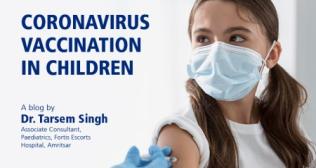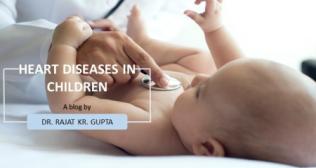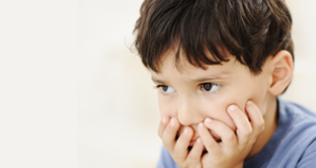
Restless Legs Syndrome in Kids: How to Help Your Child Sleep Better
Bedtime should be a time of winding down, of quiet stories and peaceful sleep. But for some children, the moment they lie down to rest, a frustrating struggle begins. They toss, they turn, they kick their legs, and they complain of "wiggly" or "funny" feelings they can't explain. Parents often attribute this to growing pains or simple bedtime resistance, but for many children, the real culprit is a misunderstood neurological condition: Restless Legs Syndrome (RLS).
While often associated with adults, RLS affects a significant number of children, disrupting their sleep and impacting their mood, behavior, and ability to concentrate during the day. Understanding this condition is the first step toward providing the relief your child needs. This guide will explore the symptoms, causes, and effective treatments for Restless Legs Syndrome in children, helping you navigate the path to better, more peaceful nights.
What Is Restless Legs Syndrome?
Restless Legs Syndrome, also known as Willis-Ekbom Disease, is a neurological sensorimotor disorder characterized by an overwhelming, irresistible urge to move the legs. This urge is typically accompanied by uncomfortable or strange sensations deep within the limbs. It is not a psychological or behavioral problem but a real medical condition rooted in the central nervous system.
The defining feature of RLS is that the symptoms are triggered by rest and are temporarily relieved by movement, making it particularly troublesome during quiet periods like sitting in a car, at a desk, or, most commonly, when trying to fall asleep.
Recognizing Restless Leg Syndrome Symptoms in Children
One of the biggest challenges in diagnosing RLS in children is that they often lack the vocabulary to describe the strange sensations they are feeling. Instead of saying their legs are uncomfortable, they might use more childlike terms or simply act out their discomfort. Paying close attention to both their words and their behaviors is key to identifying the restless leg syndrome symptoms.
The core restless leg syndrome symptoms include:
- An Overwhelming Urge to Move: This is the primary symptom. The child feels they absolutely must move their legs to get relief.
- Unpleasant Sensations: Children might describe this feeling as "creepy-crawlies," "bugs on my legs," "soda bubbles," an "itchy" feeling inside, or just "wiggly."
- Worsening Symptoms at Rest: The uncomfortable feelings and the urge to move begin or intensify during periods of inactivity, such as lying down in bed or sitting for a long time.
- Relief with Movement: The symptoms are temporarily eased by moving, stretching, walking, or rubbing the legs. This is why children with RLS seem unable to stay still.
- Evening or Nighttime Pattern: Symptoms are almost always worse in the evening and at night, which is why RLS is also considered a sleep disorder.
Because young children can't always articulate these feelings, parents might observe behaviors like constant kicking in bed, frantic rubbing of the legs, getting out of bed repeatedly to walk around, or general irritability and crying at bedtime.
Understanding the Restless Leg Syndrome Causes
The exact cause of RLS is not fully understood, but research has identified several key factors that play a significant role. The restless leg syndrome causes are believed to be a combination of genetics and specific physiological imbalances.
- Genetics: This is one of the strongest risk factors. RLS runs in families. If a parent has RLS, their child has a much higher chance of developing it as well.
- Iron Deficiency: This is the most common and treatable cause of RLS in children. The brain uses iron to produce dopamine, a neurotransmitter that is essential for controlling muscle movement. Even if a child's overall blood iron levels are normal, low iron stores in the brain (measured by a ferritin blood test) can disrupt dopamine pathways and trigger RLS symptoms.
- Dopamine Dysregulation: The symptoms of RLS are strongly linked to a problem with the dopamine system in the brain. It is believed that the body's dopamine levels naturally dip in the evening, which may explain why RLS symptoms worsen at night.
- Associated Conditions: In some children, RLS may be linked to other conditions like ADHD (Attention-Deficit/Hyperactivity Disorder) or kidney problems, though this is less common.
Restless Leg Syndrome Treatment: A Path to Peaceful Nights
The primary goal of restless leg syndrome treatment in children is to reduce symptoms, improve sleep quality, and enhance their overall well-being. The approach is typically stepwise, starting with the simplest and safest interventions.
1. Addressing Iron Deficiency
For any child with RLS, the first step is a blood test to check their ferritin level. If an iron deficiency is identified, iron supplementation under a doctor's supervision is the most effective treatment. It can take several months for iron stores in the brain to replenish, but this single intervention can often resolve RLS symptoms completely. Never give a child iron supplements without consulting a doctor, as too much iron can be toxic.
2. Lifestyle and Behavioral Strategies
These non-medical approaches are the cornerstone of managing RLS in children:
- Establish Excellent Sleep Hygiene: A consistent bedtime and wake-up time (even on weekends), a calming pre-sleep routine (like a warm bath followed by reading), and a cool, dark, quiet bedroom can make a significant difference.
- Encourage Regular, Moderate Exercise: Physical activity during the day can help reduce the severity of RLS symptoms at night. However, intense exercise too close to bedtime should be avoided as it can sometimes make symptoms worse.
- Soothing Techniques: Gentle stretching of the leg muscles before bed can be very helpful. A warm bath or applying a warm compress to the legs can also be calming. Many children find that a gentle leg massage provides immediate relief from the uncomfortable sensations.
- Dietary Considerations: While research is ongoing, some parents find that limiting caffeine (found in soda, chocolate, and some teas) can be beneficial.
3. Medication as a Last Resort
For children with severe, persistent RLS that does not respond to iron therapy and lifestyle changes, medication may be considered. This decision is made carefully by a pediatric neurologist or sleep specialist. The medications used are typically those that affect dopamine levels in the brain. This form of restless leg syndrome treatment is reserved for the most challenging cases.
A Brighter Outlook for Sleep
If your child's "growing pains" or bedtime fidgeting seem to follow the distinct pattern of Restless Legs Syndrome, it is worth discussing with your pediatrician. It is a real, treatable condition, not just a behavioral issue. By identifying the restless leg syndrome causes, particularly iron deficiency, and implementing supportive lifestyle strategies, you can help your child find the comfort and rest they need to grow, learn, and thrive.
Frequently Asked Questions
1. Is Restless Legs Syndrome the same as "growing pains"?
Ans. No. While both occur at night, growing pains are typically a deep, cramping ache. RLS is characterized by an irresistible urge to move the legs, accompanied by strange, often hard-to-describe sensations.
2. Can my child's diet affect their RLS?
Ans. For some children, caffeine can worsen symptoms. The most important dietary link is ensuring adequate iron intake through foods like red meat, beans, and fortified cereals, but supplementation is often needed for a true deficiency.
3. Will my child outgrow Restless Legs Syndrome?
Ans. RLS can sometimes improve or go into remission, but it is often a lifelong condition. However, with proper management, the symptoms can be well-controlled.
4. Is RLS a psychological problem?
Ans. No. RLS is a neurological disorder with a clear physiological basis. The sleep disruption it causes can lead to behavioral issues, but the condition itself is not psychological.
5. What kind of doctor should we see for our child's RLS?
Ans. You should start with your pediatrician. They can perform initial blood tests for iron deficiency. If symptoms are severe or complex, they may refer you to a pediatric sleep specialist or a pediatric neurologist.

















